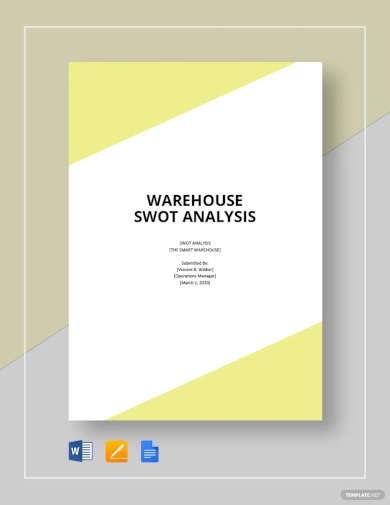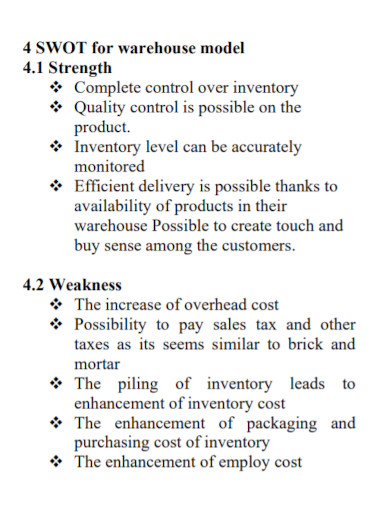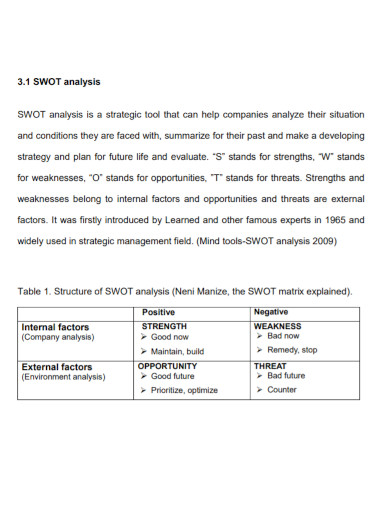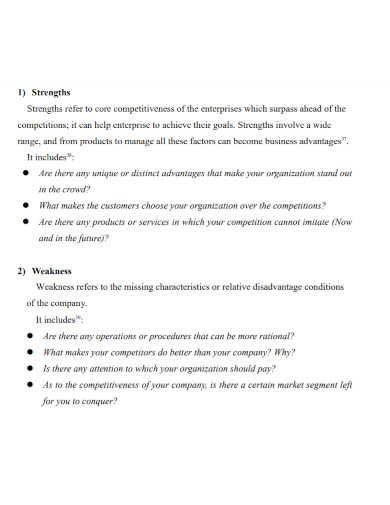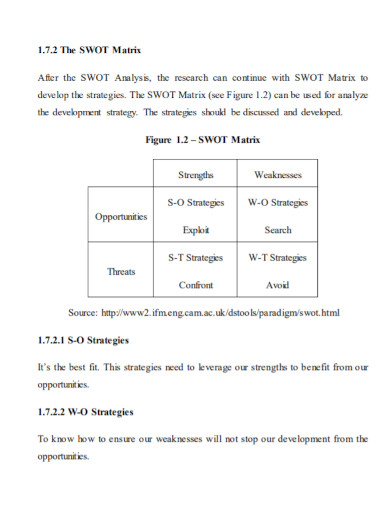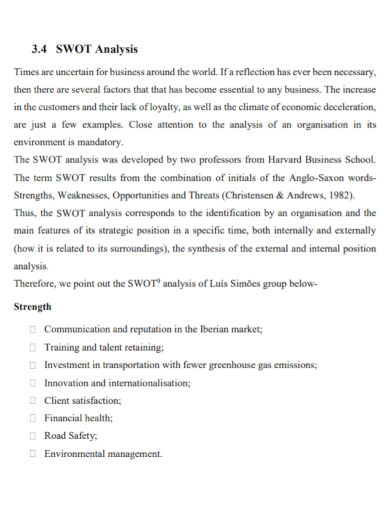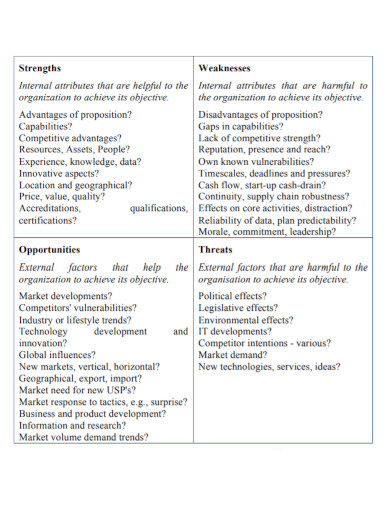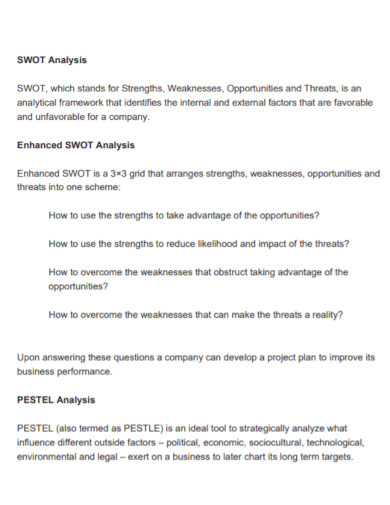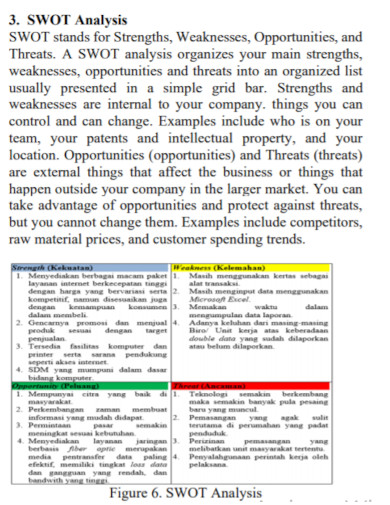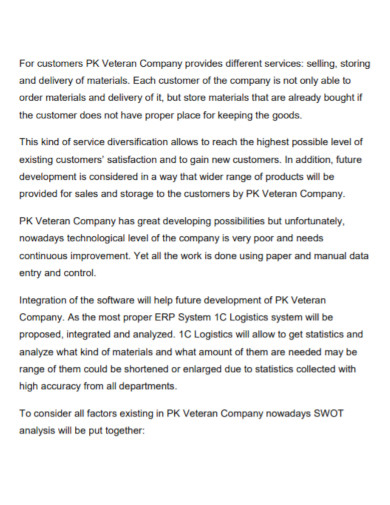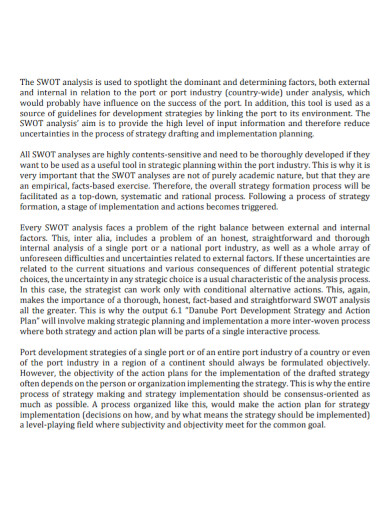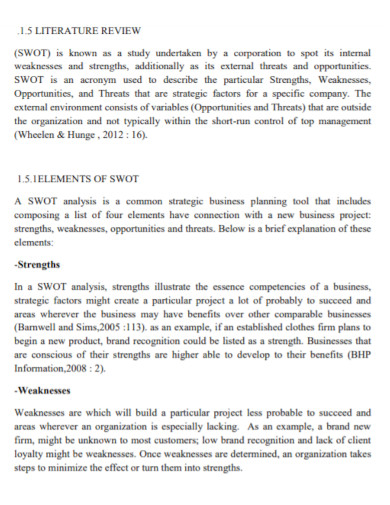11+ Warehouse SWOT Analysis Examples to Download
A variety of people in the business industry know that if you do well with your work, you can achieve great things. But there is no denying that there are also some risks that you need to take in order to achieve those great things. Take for example, warehouse owners. They know that owning a warehouse does have its positive and negative outcomes. However, they also know that regardless of the type of business that they do, as long as you are able to find a solution to the problems, you are able to achieve the goals you have. Have you ever planned on owning a warehouse? Do you own a warehouse as a business? Do you use a warehouse to store personal or products for your business? Regardless of the reason whether you own or plan to own a warehouse, you must also take into account the strengths and weaknesses of the business. With that, check out these warehouse SWOT analysis templates.
11+ Warehouse SWOT Analysis Examples
1. Warehouse swot analysis template
2. Warehouse Model SWOT Analysis
3. Strategic Warehouse SWOT Analysis
4. Railway Warehouse SWOT Analysis
5. Case Study Warehouse SWOT Analysis
6. Warehouse Management SWOT Analysis
7. Warehouse Design SWOT Analysis
8. Sportsman’s Warehouse SWOT Analysis
9. Warehouse Data SWOT Analysis
10. Company Warehouse SWOT Analysis
11. Warehouse SWOT Analysis Template
12. Warehouse SWOT Analysis
What Is a Warehouse SWOT Analysis?
A warehouse SWOT analysis is a tool used by warehouse managers or warehouse owners in assessing the state of their warehouse business. What does SWOT stand for? It stands for strengths, anything that you consider to be a positive thing or the strength of your business strategy falls under this category, weakness, opportunities, and threats. The strengths and opportunities are the positive sides of the analysis while the weaknesses and threats are the negative sides of the analysis. With this in mind, the warehouse SWOT analysis helps out by assessing the skills, techniques, and marketing strategies in order to check whether it is the right fit or it is best to change it. In addition to that, the purpose of a warehouse SWOT analysis is to help create a better strategy in order to prevent any risks or issues from happening to your business.
How to Write a Warehouse SWOT Analysis
To make the warehouse business work for you, and to avoid any risks that come with the nature of your business, you must at least have a SWOT analysis to go with your business plan. We know that a warehouse SWOT analysis is, the next thing is to know how to write it. Here are the simple steps.
1. State Your Objectives
The first thing you need to do to write or complete your warehouse SWOT analysis is to state the objectives of your business. What are you hoping to achieve when you do this? For what purpose are you doing this type of analysis? Start from there and move to the next section.
2. Divide the Segments Into Four Parts
The next thing you are going to be doing is to divide the SWOT into four parts: strengths, opportunities, weaknesses, and threats. The two positive sides and the two negative sides. You can either turn it into a graph, a chart, or a table. That would be entirely up to you as long as the four parts are present.
3. Add the Details That Fall Under the Correct Part
Details are important to complete the SWOT analysis. So placing the correct information for each part of the analysis should also be needed. Define your strengths and your opportunities as well as your weaknesses and threats. Anything that may fall under strengths like your company strategies are doing great, place it there. Any examples of opportunities to place it there as well.
4. Analyze Your Findings
The key to understanding your warehouse SWOT analysis is to analyze the findings you have collected. By understanding this, you are able to see whether or not your marketing strategies, your entire business in general, are worth taking risks or not. In addition to that, it also helps you find a better solution to make the business better.
5. Repeat as Necessary
Repeat the necessary steps again until you are able to find the solution to your problems until you are able to find the correct strategy you are able to use in order for your warehouse business to thrive. The SWOT analysis should be able to help you, but the results may vary depending on how you do the analysis.
FAQs
What is a warehouse SWOT Analysis?
A strategic tool that helps warehouse owners find the strength and weaknesses of their business and improve them.
How can a SWOT analysis help?
The SWOT analysis helps by digging into the strategies of your business, digs into the risks, and how to manage them in order for your business to strive.
What does SWOT stand for?
SWOT stands for strengths, weaknesses, opportunities, and threats.
It goes without saying when you have a business, you are almost always prone to getting tons of risks. You may at times doubt yourself because you are not sure if your business would thrive. This is why you must also have a business plan and SWOT with it. A warehouse business may sometimes scream trouble, but with the right mindset and a good SWOT analysis to help you out, you are sure to have a warehouse business that runs smoothly.



